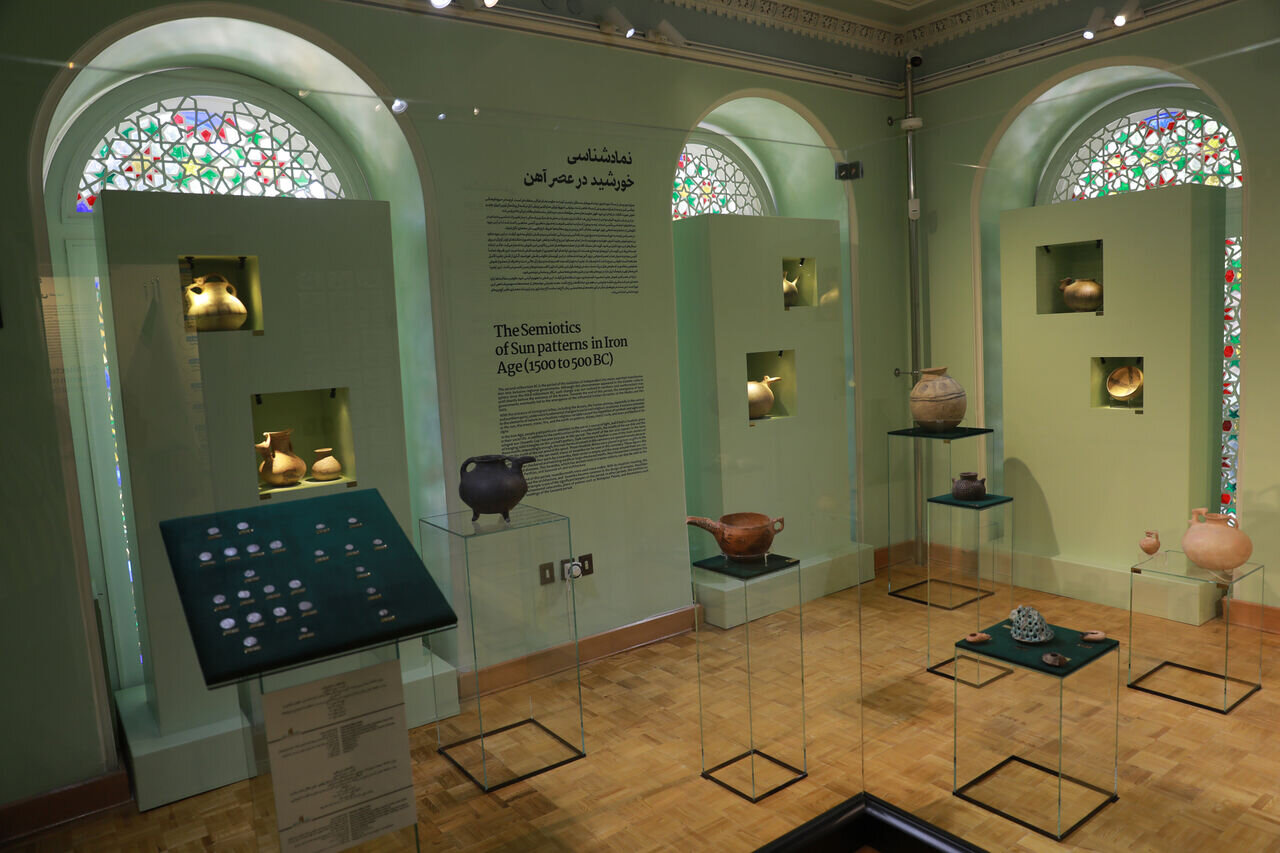Discover Museum of Light and Illumination in UNESCOlisted Yazd
Discover Museum of Light and Illumination in UNESCO-listed Yazd
The Museum of Light and Illunimation, located in the historic city of Yazd, stands as a cultural and architectural masterpiece.

This iconic destination is nestled within a lush garden along Kashani Street. Known locally as Qasr-e Ayeneh (“Palace of Mirrors”), the museum offers visitors not only a chance to explore a strikingly beautiful building but also to delve into a rich collection of historical artifacts.
A treasure trove of history
The museum offers a fascinating glimpse into history through its diverse collection of artifacts related to light and illumination. Visitors can marvel at an array of objects, including ancient bronze mirrors and antique lighting devices like oil lamps, candle holders, and kerosene lamps, which showcase the evolution of light sources across centuries.

Among the standout exhibits are chandeliers and lamps of various types; mounted, handheld, and standing, which have been crafted to burn different fuels such as animal fat, candles, gas, kerosene, and electricity. Some of the oldest pieces, like the ancient oil lamps, date back to the Sasanian period, reflecting their rich historical significance.

In addition to lighting tools, the museum houses rare bronze and metal artifacts from historically significant regions, including Lorestan, and a collection of coins and century-old stamps, particularly from the Qajar era. Visitors can also explore beautifully handwritten manuscripts that highlight the cultural and artistic heritage of Yazd.

The museum’s inclusivity is noteworthy, as it provides accessibility for visually impaired individuals. Descriptions of the exhibits are also available in Braille, enabling all visitors to connect with the museum’s treasures. Through its thoughtful curation, the Museum of Light and Illumination not only preserves the history of light but also illuminates the cultural and artistic legacies of the past.
Architectural marvel
One of the most remarkable aspects of the museum is its unique architecture, which blends traditional Iranian and European styles.
Upon entering, visitors are greeted by a sprawling garden that frames the magnificent building. The museum itself boasts a spacious courtyard, a grand swimming pool, and intricately designed interiors.

Walls and ceilings adorned with mirror mosaics capture and reflect light, creating a luminous and enchanting atmosphere—a feature that gives the museum its name.
Adding to the splendor, wooden lattice doors and stained-glass windows scatter colorful beams of sunlight across the rooms, creating a dreamlike ambiance. The elaborate stucco work and artistic carvings further enhance the visual appeal. Notably, the Shah Neshin (King’s Quarter) and the Hozkhaneh (Pool Room) stand out as architectural highlights. The Hozkhaneh, with its massive marble pool and distinct design, is the largest room in the museum and features 1,800 tiles in its construction.
Historical significance
Constructed during the Pahlavi era, the building originally served as a private guesthouse owned by the late Reza Sarrafzadeh, a prominent local figure and merchant.

Following the 1979 Islamic Revolution, ownership of the whole garden was transferred to the Mostazafan Foundation of Islamic Revolution upon a court order, and a few years later, the property was transformed into a museum. Recognized for its cultural and architectural value, the museum was added to Iran’s National Heritage List in 1998, only a year after its inauguration as a museum.
Cultural hub
The museum frequently serves as a venue for major cultural and artistic events, including exhibitions of painting, calligraphy, and photography.
Its carefully designed decor, a harmonious blend of Iranian craftsmanship and European influence, makes it a fitting setting for such prestigious gatherings.
Why visit?
A trip to the Museum of Light and Illumination is a must for anyone visiting Yazd. It offers a rare opportunity to experience a dual attraction: a historical palace brimming with artistic elegance and a treasure trove of cultural artifacts. As Yazd itself is a UNESCO World Heritage site, the museum perfectly complements the city’s reputation as a center of history and tradition.

Whether you are drawn by its stunning architecture, intrigued by its collection of ancient relics, or simply looking to immerse yourself in the cultural splendor of Yazd, the Museum of Light and Illumination promises an unforgettable journey through time and beauty.
Yazd, don’t-miss destination in heart of Iran
In July 2017, the historical core of Yazd, the provincial capital, was named a UNESCO World Heritage site. Yazd is regularly referred to as a delightful place to stay, or a “don’t miss” destination by almost all of its visitors. The city is full of mudbrick houses that are equipped with innovative badgirs (wind catchers), atmospheric alleyways, and many Islamic and Iranian monuments that shape its eye-catching city landscape.
Cultural heritage experts believe that Yazd is a living testimony to the intelligent use of limited available resources in the desert for survival. The historical core of Yazd is chockfull of mudbrick houses, bazaars, public bathhouses, water cisterns, mosques, synagogues, Zoroastrian temples, and centuries-old gardens. From the divine point of view, the city enjoys the peaceful coexistence of three religions: Islam, Judaism, and Zoroastrianism.
AM
source: tehrantimes.com